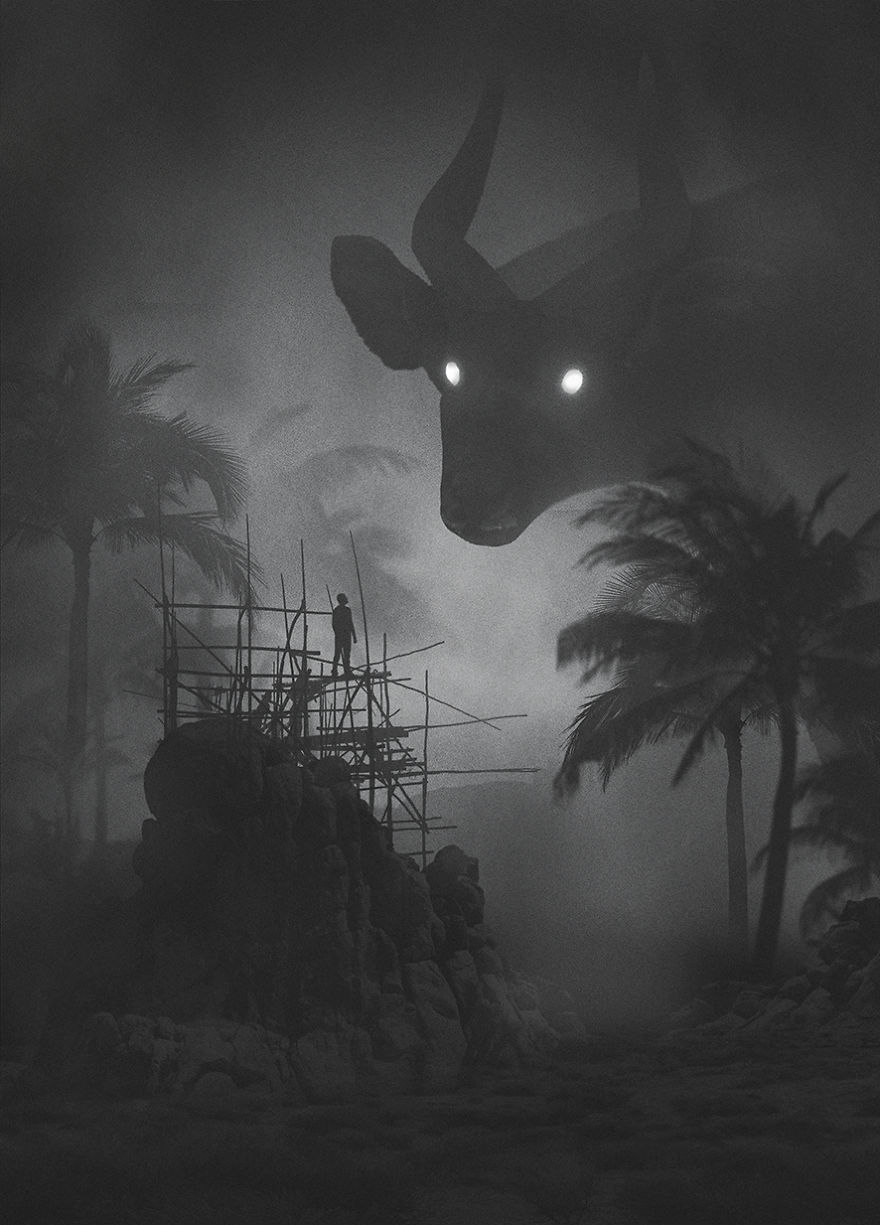Many know that depression is the silent killer. You don’t know who has it, because it’s invisible, and you don’t know how long someone’s been battling with it, because it leaves no scars. At least, not visible ones. That’s why when this one Polish artist decided to illustrate how he fought his depression through surrealist ghastly paintings, they tend to be imagery that leaves a mark on someone. At least, a long-lasting impression.
Dawid Planeta created his work as a man traveling through the jungle where all the creatures are massively overwhelming and he, the man, is a minuscule, passing figment in the world of the jungle, unable to fight back or do anything but keep going. Where each step seems too small to be meaningful, and even if you’re not someone who appreciates or values art the same way as some fanatics do, you can still appreciate it.
Source: minipeople.tumblr.com || Facebook
#1 Cliff

Insider questioned why people with mental illness had such creative depth.
Psychologists have long been fascinated by the tentative link between mental health and creativity. It’s no secret that some of the most famous artists of all time were plagued with delusions and hallucinations, and to this day we see news stories of artists and performers in the public eye struggling with their mental health, and sometimes taking their own lives. The pattern seems to go back a long way. In 1888, Vincent Van Gogh famously cut off his ear after an argument with his friend Paul Gauguin. He died by suicide two years later in 1890. “I am unable to describe exactly what is the matter with me,” he wrote in a letter to his brother a couple of years before his death. “Now and then there are horrible fits of anxiety, apparently without cause, or otherwise a feeling of emptiness and fatigue in the head… At times I have attacks of melancholy and of atrocious remorse.”
#2 Flight

#3 Isolated

#4 Pillars

#5 Ruins

#6 Boats

#7 Flame

Edvard Munch, who painted one of the most iconic and widely recognised masterpieces of the 19th century, also had his demons. After painting “The Scream,” he said the idea came to him in a vision, where the “sky turned blood red.” “I stopped and leaned against the fence, feeling unspeakably tired,” he wrote. “Tongues of fire and blood stretched over the bluish black fjord. My friends went on walking, while I lagged behind, shivering with fear. Then I heard the enormous, infinite scream of nature.” Experts believe the painting represents the anxiety of man, coupled with Munch’s internal torment, which fueled his art. In 1908, Munch wrote how his condition was “verging on madness,” and it was “touch and go,” so he entered electrification therapy for hallucinations and feelings of persecution.
#8 Statue

#9 Totem

#10 Eagle

#11 Heron

#12 Floating

“We’ve got a whole bunch of tortured artists,” psychologist Perpetua Neo told Insider, speaking on the proposed link between mental illness and creativity. “A lot of them draw on their tortured selves to create meaning and create art.” Artists can be pretty unhappy people, she said, and they are often quite honest about that fact. “But at the same time, as a psychologist, I would ask if perhaps they need to believe, to create their identity, to be an artist with a tortured soul.” It ties in with the idea of the “starving artist,” where people sacrifice their wellbeing in order to focus on their art — living on minimum expenses, spending whatever they have on their art projects.
#13 Owl

#14 Prey

#15 Whale

#16 Silence

#17 Deer

#18 Fish

#19 Rhino

What about you? Did you feel the weight of their work behind their paintings? Tell us in the comments!

GIPHY App Key not set. Please check settings